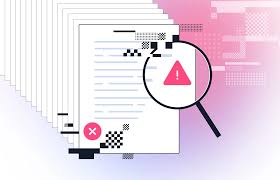How to Get Your Biz Accounting Software Setup Properly in No Time

Introduction
As a small business owner, one of the crucial aspects of managing your finances effectively is setting up a reliable accounting software system. With the advancements in technology, manual bookkeeping is becoming outdated, and business accounting software is becoming increasingly essential for streamlining financial processes, improving accuracy, and enhancing overall productivity. In this article, we will explore the reasons why small business owners should consider setting up accounting software and provide a step-by-step guide to help you get started quickly and efficiently.
Why Small Business Owners Should Setup Accounting Software
Improved Financial Management
Properly setting up accounting software for your business enables you to gain better control over your finances. With the ability to track income, expenses, and cash flow, you can make informed decisions, identify areas for cost-cutting, and allocate resources more efficiently. By having accurate financial data at your fingertips, you can monitor your business’s financial health and make strategic plans for growth.
Time and Cost Savings
Biz accounting software automates various financial tasks that would otherwise be time-consuming if done manually. It eliminates the need for manual data entry, reduces human errors, and allows you to generate reports, invoices, and financial statements with just a few clicks. By automating these processes, you can save valuable time and redirect your efforts towards more critical aspects of your business.
Enhanced Accuracy
Manual bookkeeping can be prone to errors, which can lead to significant financial consequences for your business. By using accounting software, you minimize the risk of mistakes caused by human error. The software performs calculations automatically, ensuring accurate financial records. Additionally, the software often provides built-in checks and balances to prevent common errors, such as duplicate entries or incorrect calculations.
Simplified Tax Compliance
Tax compliance is a vital aspect of running a business, and proper accounting software can simplify the process. With features designed to handle tax-related tasks, such as categorizing expenses, generating tax reports, and tracking deductible expenses, you can streamline your tax preparation and ensure that you are meeting all regulatory requirements. By maintaining accurate and organized financial records, you reduce the chances of errors in tax reporting, ultimately avoiding penalties and saving time during tax season.
Setting Up Your Biz Accounting Software
Now that we understand the importance of accounting software for small businesses, let’s dive into the step-by-step process of setting up your system.
1. Assess Your Business Needs
Begin by assessing your business requirements and determining what features and functionalities you need from your accounting software. Consider factors such as the size of your business, the volume of transactions, the level of automation desired, and any specific industry requirements.
2. Research and Compare Software Options
Conduct thorough research to identify accounting software options that align with your business needs. Read reviews, compare features, and evaluate pricing plans. Look for software that is user-friendly, offers robust reporting capabilities, integrates with other tools you use (e.g., point of sale systems or e-commerce platforms), and provides reliable customer support.
3. Choose and Purchase Accounting Software
Based on your research, select the accounting software that best suits your business requirements. Ensure that the software is compatible with your operating system and hardware. Consider cloud-based options, which offer the advantage of accessibility from anywhere with an internet connection. Once you have made your decision, proceed with the purchase.
4. Configure the Software
After purchasing the software, install it on your computer or access the cloud-based platform. Follow the provided setup instructions, including creating a company profile, entering initial financial data, and setting up your chart of accounts. Customize the software to match your business’s unique needs and preferences.
5. Import or Enter Existing Data
If you have existing financial data in spreadsheets or other accounting software, you may have the option to import that data into your new accounting software. This step can save you time and ensure continuity in your financial records. If you don’t have existing data, start entering your transactions and other financial information into the software.
6. Train Your Team and Start Using
If you have employees who will be using the accounting software, provide them with proper training to ensure they understand how to use it effectively. Familiarize them with the software’s features and functionalities, such as recording transactions, generating reports, and managing customer invoices. Encourage them to ask questions and offer ongoing support as needed.
Conclusion
Setting up accounting software for your small business is a crucial step toward efficient financial management. By utilizing the right software and following the steps outlined in this article, you can streamline your accounting processes, enhance accuracy, and gain valuable insights into your business’s financial health. Embrace the power of technology and take control of your finances with a well-implemented accounting software system. Invest time and effort upfront, and you will reap the long-term benefits of improved productivity and informed decision-making.






